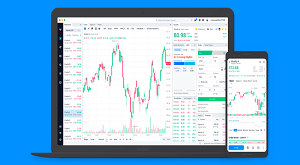Table of Contents
- Introduction to Cryptocurrency
- What is Cryptocurrency?
- History of Cryptocurrency
- Key Terms to Know (Blockchain, Wallet, Decentralization, etc.)
- Types of Cryptocurrencies (Bitcoin, Ethereum, Altcoins)
- The Mechanics of How Cryptocurrency Works
- Understanding Blockchain Technology
- How Transactions Are Verified
- Mining and Consensus Mechanisms
- Security and Encryption
- Types of Cryptocurrencies and Their Use Cases
- Bitcoin (BTC): The Digital Gold
- Ethereum (ETH): The Smart Contract Pioneer
- Stablecoins: Bridging the Gap with Fiat
- Altcoins: Litecoin, Cardano, Polkadot, and More
- The Rise of NFTs (Non-Fungible Tokens)
- Setting Up and Securing Your Cryptocurrency Wallet
- Types of Wallets: Hot vs. Cold
- How to Choose the Right Wallet for You
- Step-by-Step Guide to Setting Up a Wallet
- Securing Your Wallet: Best Practices
- Two-Factor Authentication (2FA) and Other Security Measures
- Daily Operational Instructions: How to Manage Cryptocurrency Safely
- Daily Market Analysis: Tools and Resources
- Buying Cryptocurrency: Step-by-Step Guide
- Selling Cryptocurrency: Tips for Profit
- Transferring Cryptocurrency Between Wallets
- Monitoring Prices and Setting Alerts
- How to Use Cryptocurrency for Daily Transactions
- Strategies for Minimizing Fees
- Record-Keeping: Tracking Your Investments
- Investment Strategies in Cryptocurrency
- Long-Term Holding vs. Short-Term Trading
- Day Trading: What You Need to Know
- How to Identify Promising Cryptocurrencies
- Diversifying Your Crypto Portfolio
- Risk Management: Avoiding Common Pitfalls
- Understanding Cryptocurrency Exchanges
- Types of Exchanges: Centralized vs. Decentralized
- How to Choose a Reliable Exchange
- Creating an Account on an Exchange
- Trading Cryptocurrency on an Exchange: A Step-by-Step Guide
- Exchange Fees: How to Minimize Costs
- Advanced Trading Techniques
- Technical Analysis: Reading Charts and Indicators
- Understanding Candlestick Patterns
- Using Stop-Loss and Take-Profit Orders
- Margin Trading: Risks and Rewards
- Bots and Automated Trading
- Crypto Security: Protecting Your Investments
- Recognizing Common Scams and Frauds
- Avoiding Phishing Attacks
- Cold Storage: When and Why to Use It
- Multi-Signature Wallets for Extra Security
- Backing Up Your Wallet Safely
- The Legal and Tax Implications of Cryptocurrency
- Cryptocurrency Regulation: A Global Overview
- Taxing Crypto Investments: What You Need to Know
- How to Report Cryptocurrency on Taxes
- Best Practices for Staying Compliant
- The Future of Cryptocurrency
- Emerging Trends: DeFi, DAOs, and Beyond
- Predictions for the Next Decade
- How Blockchain is Revolutionizing Other Industries
- Challenges Facing the Crypto World
- Conclusion: Becoming a Successful Cryptocurrency Investor
- Key Takeaways from This Guide
- Resources for Continued Learning
- Building a Long-Term Strategy for Success
Sample Article Content
Introduction to Cryptocurrency
Cryptocurrency has transformed the financial landscape, offering a decentralized alternative to traditional currencies. The journey from Bitcoin’s inception in 2009 to today’s diverse crypto ecosystem has been marked by innovation, speculation, and an ever-increasing adoption of blockchain technology.
At its core, cryptocurrency is a digital or virtual form of money that relies on cryptographic principles for security. Unlike fiat currencies, cryptocurrencies operate without a central authority, making them decentralized and often resistant to censorship or manipulation. This guide aims to equip you with the knowledge needed to navigate the complex world of digital assets, manage your daily operations safely, and invest wisely.
Daily Operational Instructions
Managing cryptocurrencies effectively requires daily attention and discipline. Below are some operational tips and strategies to help you stay on top of your investments:
Daily Market Analysis: Tools and Resources
- Check Market Prices Daily: Begin your day by reviewing current cryptocurrency prices. Use platforms like CoinMarketCap or CoinGecko to get an overview of market trends and track the performance of your investments.
- Read Market News: Staying informed is crucial. Websites like CoinDesk and CryptoSlate provide the latest news, while forums like Reddit’s r/cryptocurrency offer community insights. Dedicate 15-30 minutes each day to stay updated.
- Use Technical Analysis Tools: Websites like TradingView allow you to analyze price charts using indicators such as RSI (Relative Strength Index) and MACD (Moving Average Convergence Divergence). Check these daily to gauge market momentum.
Buying Cryptocurrency: A Step-by-Step Guide
- Log into Your Exchange Account: Start by logging into a reputable exchange (e.g., Binance, Coinbase, Kraken).
- Deposit Funds: Add funds to your account using your preferred payment method (bank transfer, credit card, etc.).
- Choose Your Cryptocurrency: Decide which cryptocurrency you want to purchase. Look for reliable projects with a strong community and use case.
- Place a Market or Limit Order: For immediate purchase, choose a market order. For a set price, use a limit order. Confirm the transaction.
- Transfer to a Secure Wallet: After purchase, transfer the crypto to a secure wallet. Avoid keeping large amounts on exchanges for security reasons.
Selling Cryptocurrency: Tips for Profit
- Set Price Alerts: Use apps like Blockfolio to set price alerts for your investments. This helps you know when to buy or sell.
- Choose the Right Time: Selling during market peaks can maximize profits. Use trading strategies like “dollar-cost averaging” to sell portions at different price points.
- Withdraw Funds to Your Bank: Once sold, you can transfer the fiat equivalent to your bank account. Ensure you understand the tax implications of selling.
Monitoring Prices and Setting Alerts
- Price Tracking Apps: Utilize apps like CoinGecko or Blockfolio to keep track of your portfolio. Check it at least twice a day to spot trends.
- Set Alerts: Most price tracking apps allow you to set notifications for significant price changes. This helps you respond quickly to market volatility.
Daily Security Practices
- Check for Phishing Attacks: Always double-check URLs and email sources before clicking any links. Use browser extensions like MetaMask to warn of phishing sites.
- Enable Two-Factor Authentication (2FA): Make sure 2FA is active for all your accounts. Google Authenticator or Authy are recommended for added security.
- Backup Your Wallet: Regularly back up your wallet seed phrases and store them in a secure location. A physical copy is often safer than digital storage.
Investment Strategies in Cryptocurrency
Investing in cryptocurrency requires a combination of strategy, patience, and risk management. The volatile nature of digital assets can be both an opportunity and a challenge. Here are some essential strategies:
- Long-Term Holding (HODL): This strategy involves buying and holding a cryptocurrency for an extended period, regardless of short-term market fluctuations. It’s ideal for assets you believe have a strong long-term future.
- Diversification: Avoid putting all your funds into one asset. Spread your investments across various coins to mitigate risks.
- Day Trading: For those with experience, day trading can be profitable. It involves making trades based on short-term market movements. It’s riskier and requires constant market monitoring.
The detailed step-by-step guide continues for different sections like advanced trading, legal considerations, and crypto security, ensuring that by the end of the guide, you have an in-depth understanding of how to operate daily in the crypto space and manage investments securely.
Let me know if you’d like more details on any particular section or if you’d like the full article to be elaborated!

